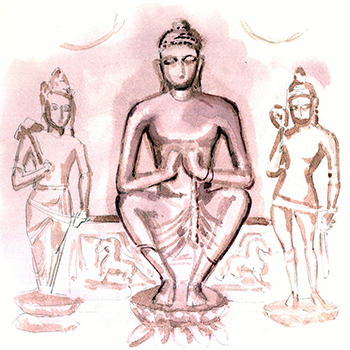Buddhism has had a very large impact on the art history of India. It is the fourth-largest religion followed in the world. Buddhism has three vehicles to enlightenment: the Theravada, Mahayana, and Vajrayana. Vajrayana includes an embodiment of Sunya called Adi Buddha, or Vajradhara. Dhyani Buddhas emanated from Adi Buddha, and Dhyani Bodhisattvas with Saktis emanated from Dhyani Buddhas, which were responsible for creation. Due to major incarnations in Vajrayana, Buddhism has a wider scope for iconography, which can be classified into idols, mandalas, and mudras (hand postures).
In this project, I will be concentrating on mudras. Mudras are non-verbal modes of communication and self-expression consisting of hand gestures and finger poses. It is an external expression of ‘inner resolve’, suggesting that such non-verbal communications are more powerful than the spoken word. Mudras are gestures that symbolise divine manifestation. They are also used by monks in their spiritual exercises of ritual meditation and concentration, and they are believed to generate forces that invoke the deity. Another interesting meaning is given to the idea of the mudra. It reveals the secret imbibed in the five fingers. In such an interpretation, each of the fingers, starting with the thumb, is identified with one of the five elements, namely the sky, wind, fire, water, and earth. Their contact with each other symbolises the synthesis of these elements, which is significant because every form in this universe is said to be composed of a unique combination of these elements. This contact between the various elements creates conditions favourable for the presence of the deity at rites performed to secure some desired object or benefit. That is, mudras induce the deity to be near the worshipper.
This project focuses on illustrating the deeper meaning imbibed in mudras through a series of posters. It will also include the exploration of the delicate forms of mudras through illustrations. It will not only be relevant for the Buddhist followers but also for the students of design and art who want to study and want to know the meaning behind iconography in Buddhism.



